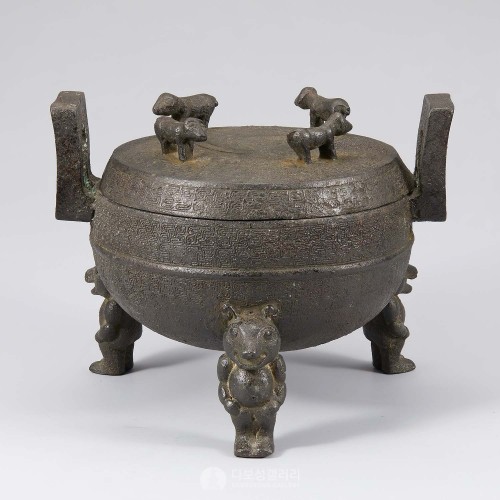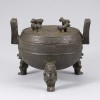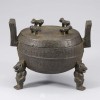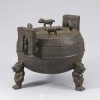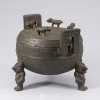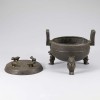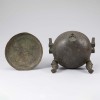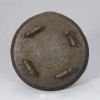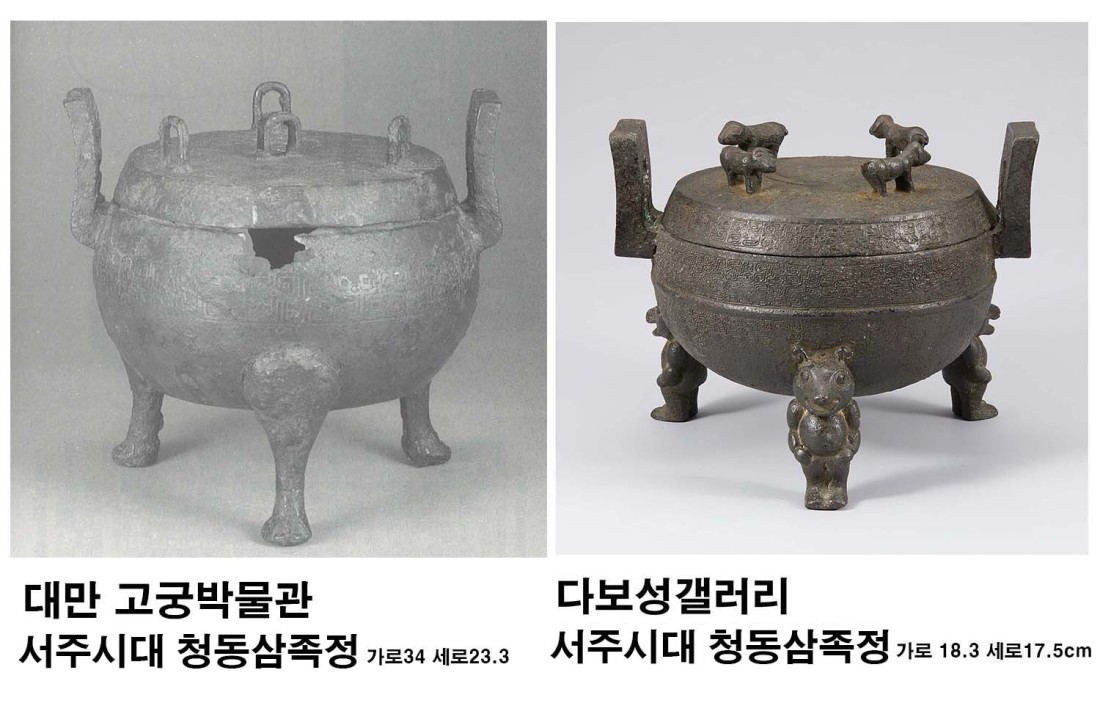본문
곰 모양의 세 다리[三足]에 받쳐진 원통형 몸체와 네 마리의 황소가 서 있는 모습이 붙어있는 뚜껑으로 구성되어 있는 청동 정(鼎)이다.
조형은 중후하며 문양과 장식이 소박한 형태로서 원형의 뚜껑에는 기하학적 무늬가 연속적으로 새겨져 있으며, 뚜껑 가운데에 '몸은 달과 구름 가는 대로 따르고, 바람을 짝하여 방향을 잡을 것을 권하다' 라는 뜻의 금문(金文, 청동기 시대에 주조되거나 새겨진 문자를 의미) 아홉 글자 雲月己(운월기) • 伉風從(항풍종) • 方侑夾(방유협) 이 음각되어 있다. 이 유물은 일제시대에 보존처리를 거쳐 본래의 형상이 복원되고 안정화되었으며, 현재 대만 고궁박물관에 전시되어 있는 비슷한 형태의 청동 정보다 보존상태가 양호하여 역사적으로도 가치가 높은 유물로 사료된다.
정(鼎)은 서주시대의 청동 솥으로 삼족(三足)이 특징이며, 역사적 가치가 높은 청동예기(禮器)이다.
숫자 3(三)은 우주만물의 핵심인 하늘[天]과 땅[地]과 사람[人]의 도(道)를 상징함과 아울러 고대사회에서 가장 완벽한 숫자로 인식되었다.
서주의 청동예기는 하(夏)나 상대(商)와 마찬가지로 토제 등으로 모범(母范)을 만들어 도범법(陶范法)으로 제작되었으며, 서주 금문(金文)은 고고학, 문자학, 역사학 분야에서 귀중한 가치를 지닌다.
A semi-globular body is supported by three bear legs, and four bulls stand on the cover. The structure is imposing overall with simple decorations. On top of a circular cover is a nine-character inscription engraved reading Yunyueji Kangfeng Cong Fangyoujia (Let the body follow the moon and clouds and pair the wind to find the way). The present work was restored and stabilized via conservation during the Japanese occupation, which now seems to be in a better condition than the bronze tripod vessel in the National Palace Museum in Taiwan and is regarded to be a highly historic cultural relic.
Ding (鼎), a bronze tripod of the Western Zhou dynasty, is one of the historic bronze ritual vessels.
The number three was believed to be the perfect number, symbolizing the way of the universe's core consisting of heaven, earth, and human.
Western Zhou bronze ritual vessels, as well as those of the Xia and Shand dynasties, were made by clay-mold technique. Jinwen (金文, an inscription on ancient bronze objects) of the Western Zhou period is highly valued in history, archaeology, and graphonomics.
